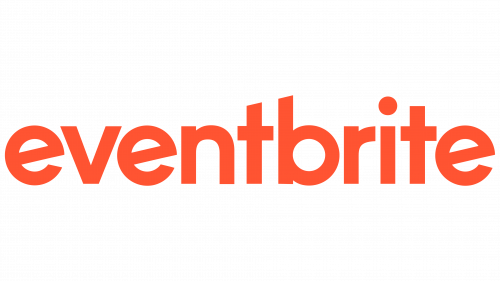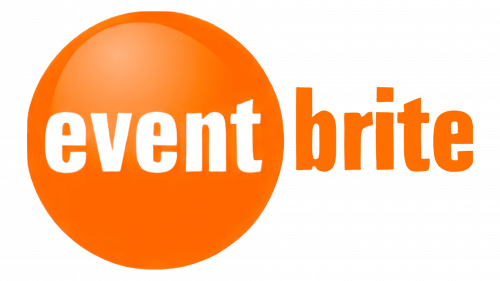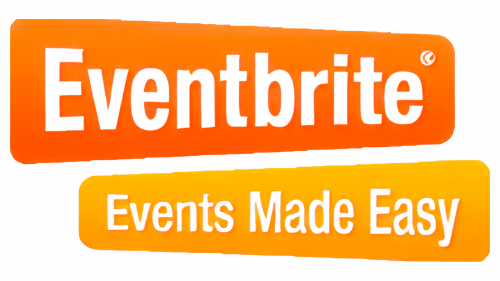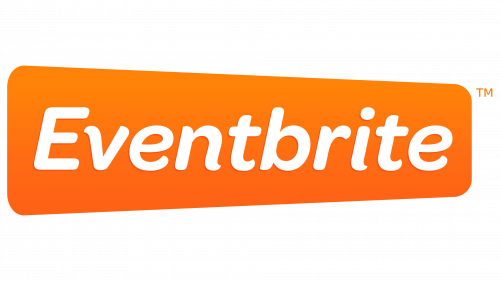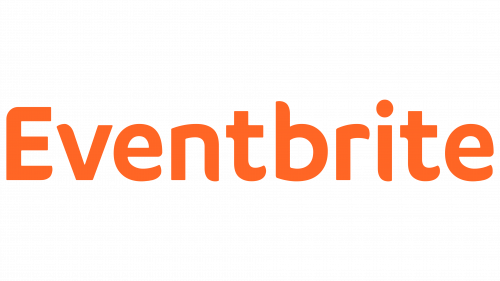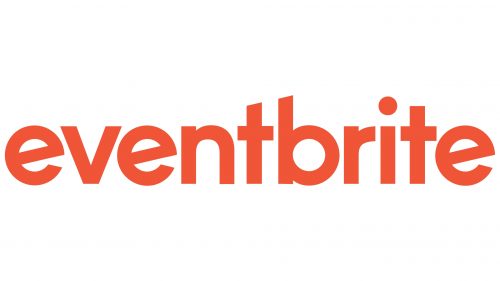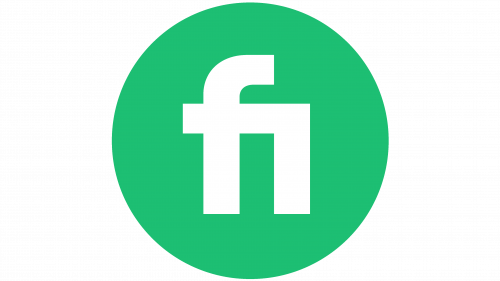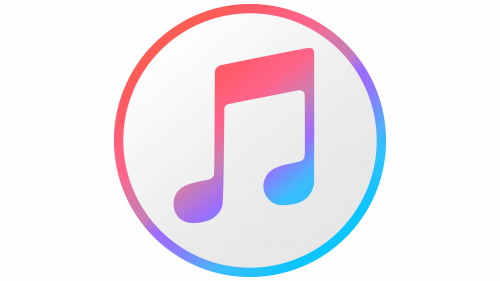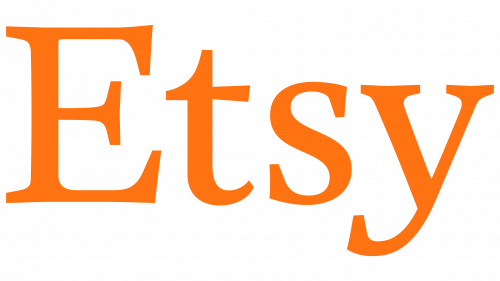The Eventbrite logo appears optimistic and energetic and emphasizes the company’s business focus. It embodies the promise to enhance the organizational aspects of events, highlight advertising and ticket sales, and provide a better user experience. The design reflects a commitment to engagement and active work with the audience.
The lines of the emblem convey a readiness for collaboration, showcasing the company’s openness to new opportunities and partners. These design elements underscore the goal of reaching a broader audience, involving more viewers and participants in every event.
Eventbrite: Brand overview
Eventbrite was founded in 2006 in San Francisco by Kevin Hartz, Julia Hartz, and Renaud Visser. After struggling with the complexities of planning his wedding, Kevin Hartz saw the need for a simple event management solution and envisioned a platform to streamline event planning.
During its first year, the team focused on creating a basic platform version. They worked out of their San Francisco home and funded the project with their investments. The original version included straightforward features for creating event pages and selling tickets.
A key moment in the company’s growth came in 2007 when European investors contributed $350,000 in its first round of outside funding. This support allowed the team to expand its development resources and enhance platform features.
In 2008, well-known investors, including Keith Rabois and Kevin Rose, backed the project. Recognizing the rising importance of mobile technology, the company began actively developing mobile solutions. By 2009, the team had launched its first mobile app and ticket scanning system, processing over $100 million in ticket sales that year.
In 2010, Sequoia Capital’s $6.5 million Series A funding enabled the organization to expand internationally and significantly grow its team.
2011 was a year of substantial growth, with $50 million raised in Series D funding from Tiger Global and other investors. The company expanded its reach further by integrating with Facebook.
To establish a presence in the UK market, a London office was opened in 2012. New tools for event organizers, such as a registration management system and improved analytics, were also introduced.
In 2013, the team acquired Eventioz, a leading event platform in Latin America, and Lanyrd, a conference management tool, strengthening its position in the global market. In 2014, Tiger Global and T. Rowe Price contributed an additional $60 million, and the platform for developers to create integrations was launched.
In 2015, the introduction of RFID technology for large festivals and concerts marked a year of technological innovation, as did enhancements to mobile tools for event organizers.
In 2016, Queue, a company specializing in music industry technologies, was acquired, strengthening the company’s presence in the music events market.
In 2017, Pandora’s $200 million acquisition of Ticketfly further cemented its position in the music events industry.
The company went public on the New York Stock Exchange in 2018, raising over $230 million under the ticker EB. International expansion continued, and new tools for event planners, including enhanced analytics and marketing features, were introduced in 2019.
In response to the growing demand for virtual and hybrid events, new tools for online participation and streaming were launched in 2020–2021.
In 2022, an upgraded platform with new features for event organizers, such as advanced data analysis and marketing tools, marked a period of technological revitalization.
Over the years, the platform has consistently enhanced the user experience and expanded its features, establishing a global ecosystem for event planning and connecting partners, organizers, and attendees worldwide.
Meaning and History
What is Eventbrite?
This ticketing and event management platform connects organizers with their ideal audience. The platform enables organizers to design, promote, and sell event tickets, providing guests with a convenient booking process, mobile ticket delivery, and secure payment processing. Going beyond simple ticket sales, the platform serves as a complete event ecosystem: attendees easily discover events aligned with their interests, and organizers gain access to comprehensive analytics, attendee list management, customizable registration forms, and marketing tools to boost attendance.
2006 – 2010
A large orange circle divided The original Eventbrite logo into two parts. This element could evoke different associations, resembling:
- The Earth symbolizes local events that companies organize to attract people to their city.
- A disco ball, billiard ball, or balloon, bringing to mind images related to entertainment and fun.
On the shiny surface of the circle, the word “Event” was written in white letters. Next to it, in orange letters that matched the circle’s color, was the word “brite.” The second part of the name could be seen as a modified version of the word “bright,” symbolizing vibrant, successful, and memorable celebrations and events.
This logo’s design aimed to draw attention to something exciting and noteworthy. The shape of the ball used in the logo points to a platform where tickets for various entertainment events are gathered. This image visually supports the idea that Eventbrite is where all offerings for organizing bright events that promise to be unforgettable come together.
2010 – 2011
After the company’s expansion and increased users, the emblem was updated to reflect its modern look. The new logo consists of two rectangular signs with smoothly rounded corners, creating an impression of movement in opposite directions. This image evokes associations with signposts leading to the event location, emphasizing the company’s focus on event organization.
The company name is set against a bright orange background on the first sign. The brand’s positioning is highlighted on the second sign: “Making Events Easy.” Each word is capitalized, giving the logo clarity and structure. The company emphasizes that any event is organized with high quality. The light tone used in the logo’s background visually conveys the idea of ease and simplicity in the event organization process.
Orange symbolizes communication and bringing people together, and it is associated with a warm and friendly atmosphere. This shade highlights the idea that Eventbrite is a platform that creates favorable conditions for communication and the organization of enjoyable and memorable events.
2011 – 2016
An investment of $50 million boosted the company’s further development, leading to changes in the company logo. Only the top sign with the resource name remains on the emblem, while the right part of the background is slightly elongated and fades into the distance, creating a sense of forward movement. This design element symbolizes an invitation to follow new opportunities, like an open door calling toward new achievements and prospects.
The font was a light italic, highlighting the company’s growth and development process. The script style reflects the brand’s unique character, showcasing the individuality of each event. The light and flexible font emphasizes that every event organized through the platform is a unique and one-of-a-kind experience specially prepared for its participants. Posters and announcements for these events are created with special attention to detail, highlighting a personalized approach to each occasion.
2016 – 2018
The logo strives for minimalism, focusing not on the design but on the events announced through the resource. A simple and concise orange inscription, free of unnecessary details, conveys the brand’s main idea. The name reflects the company’s purpose, while the orange color conveys a sense of communication, bringing people together and hosting events, creating an atmosphere of lively interaction.
The simplified design allows the focus to remain on the essence—organizing and promoting events. The color palette enhances the logo, highlighting its mission of facilitating meetings, communicating, and uniting people through the platform. The visual symbol simultaneously communicates that the platform offers access to a wide range of events and fosters a comfortable environment for participant interaction and engagement.
2018 – today
After going public, the logo changed. The letters lost their script elements, giving the name a more business-like and formal appearance. This new styling, without capital letters, emphasizes the platform’s supportive role—it serves as a resource that provides information and tools but does not take center stage in the event itself.
The slightly slanted lines symbolize upward movement and instill a sense of optimism. This reflects growth and development, indicating that using the platform helps increase attendance, which is crucial for event organizers. The logo promises mutually beneficial cooperation, highlighting the opportunity to attract more viewers and creating an impression of effective and productive interaction between the platform and event organizers.
